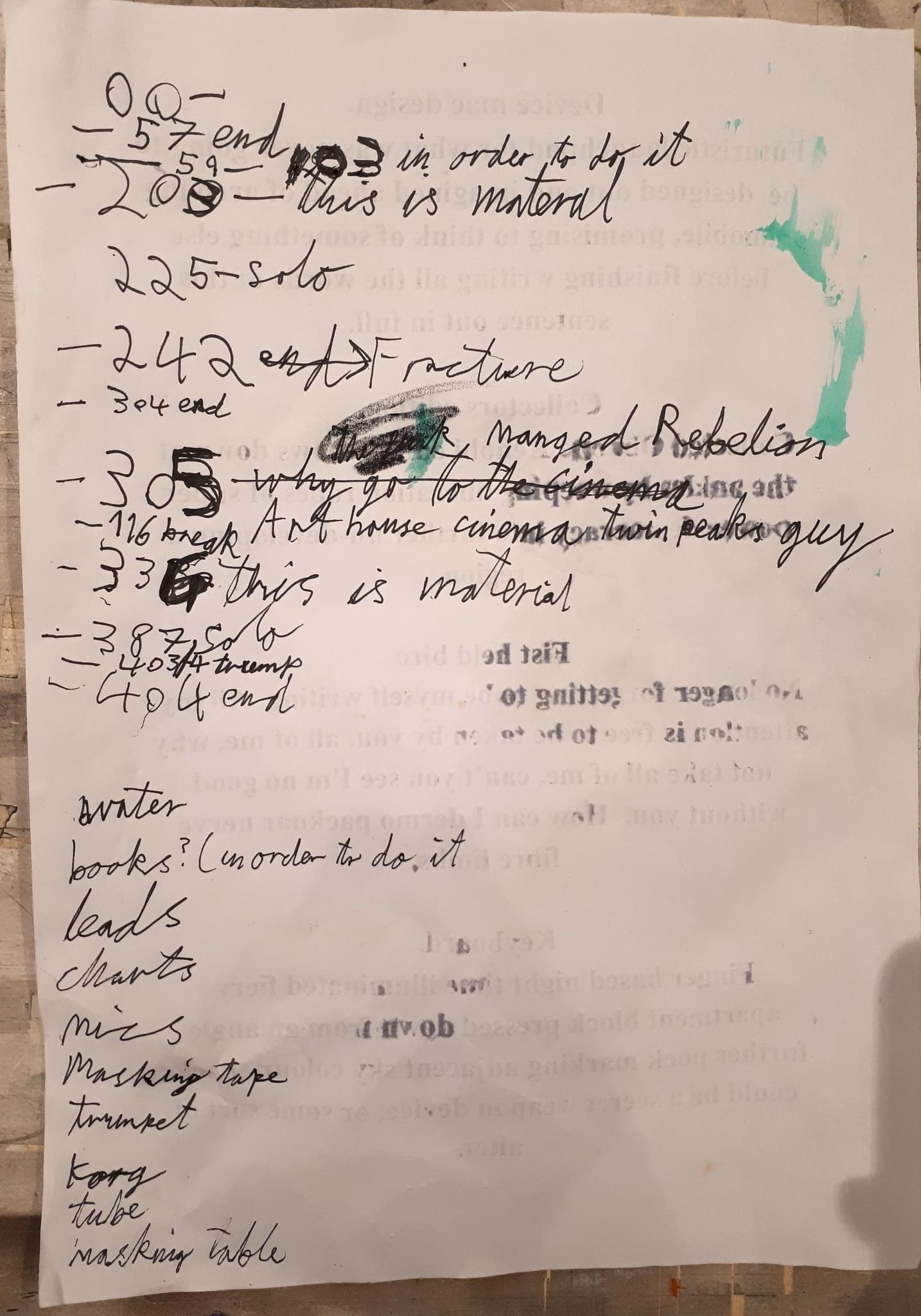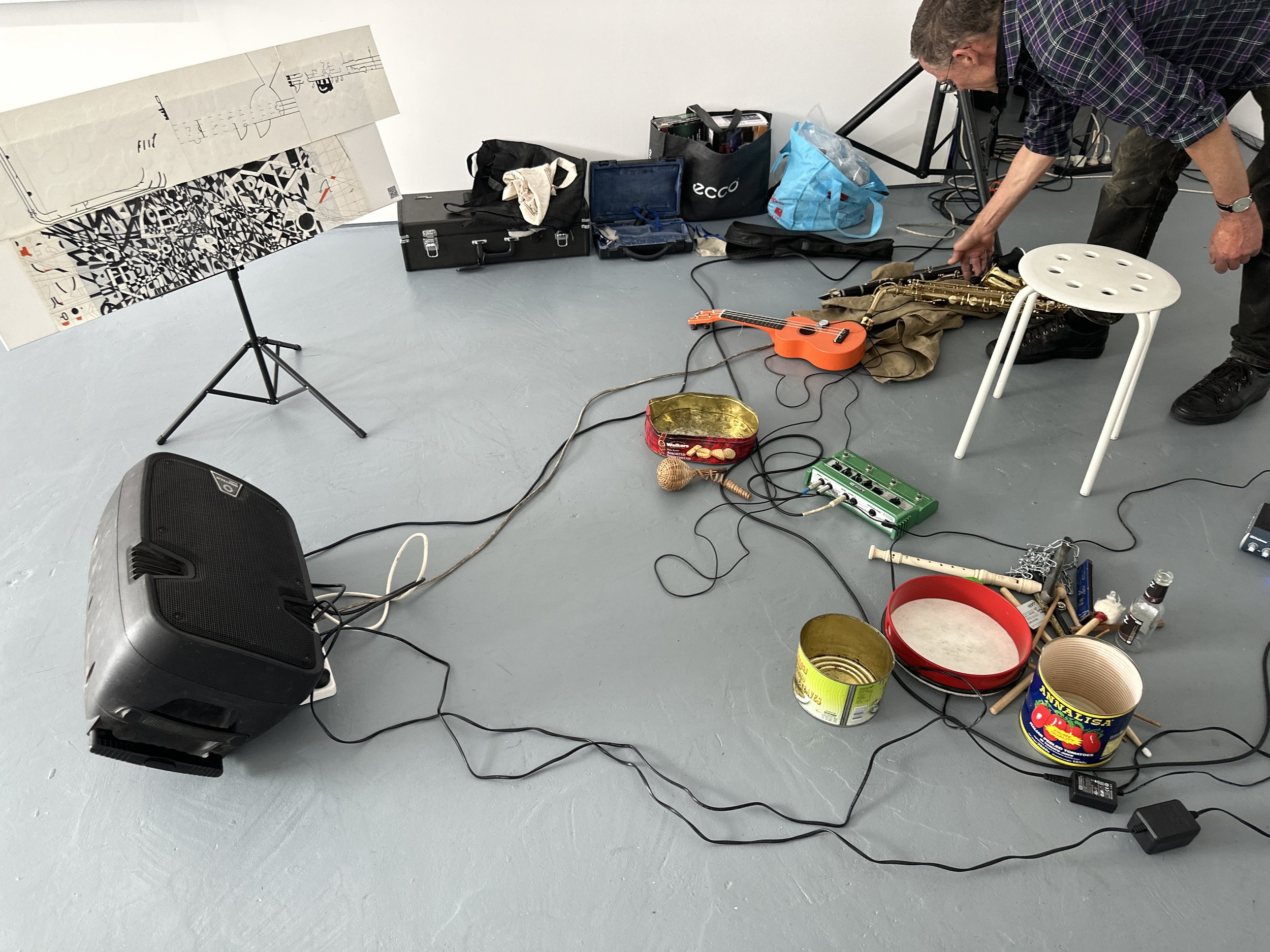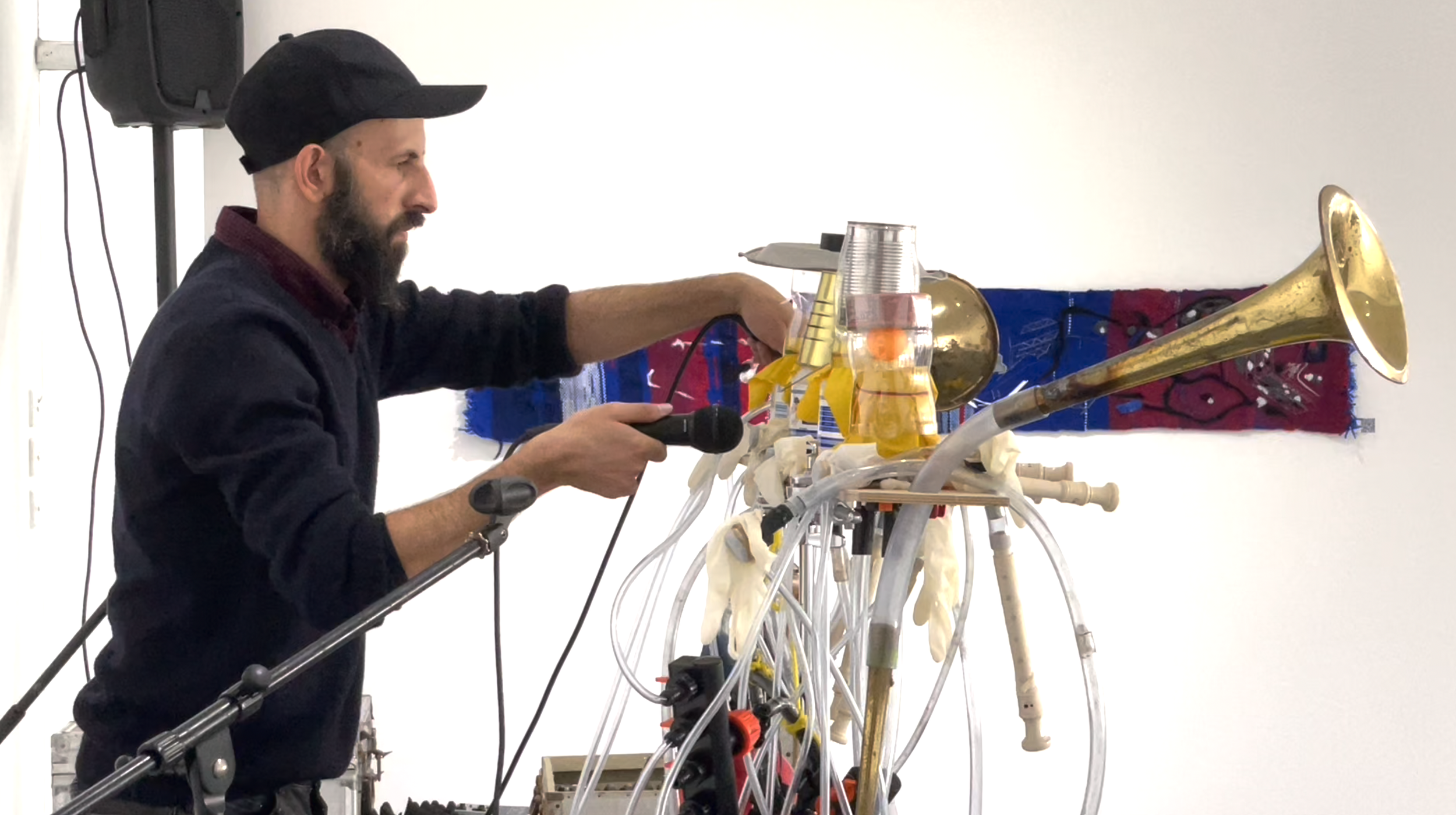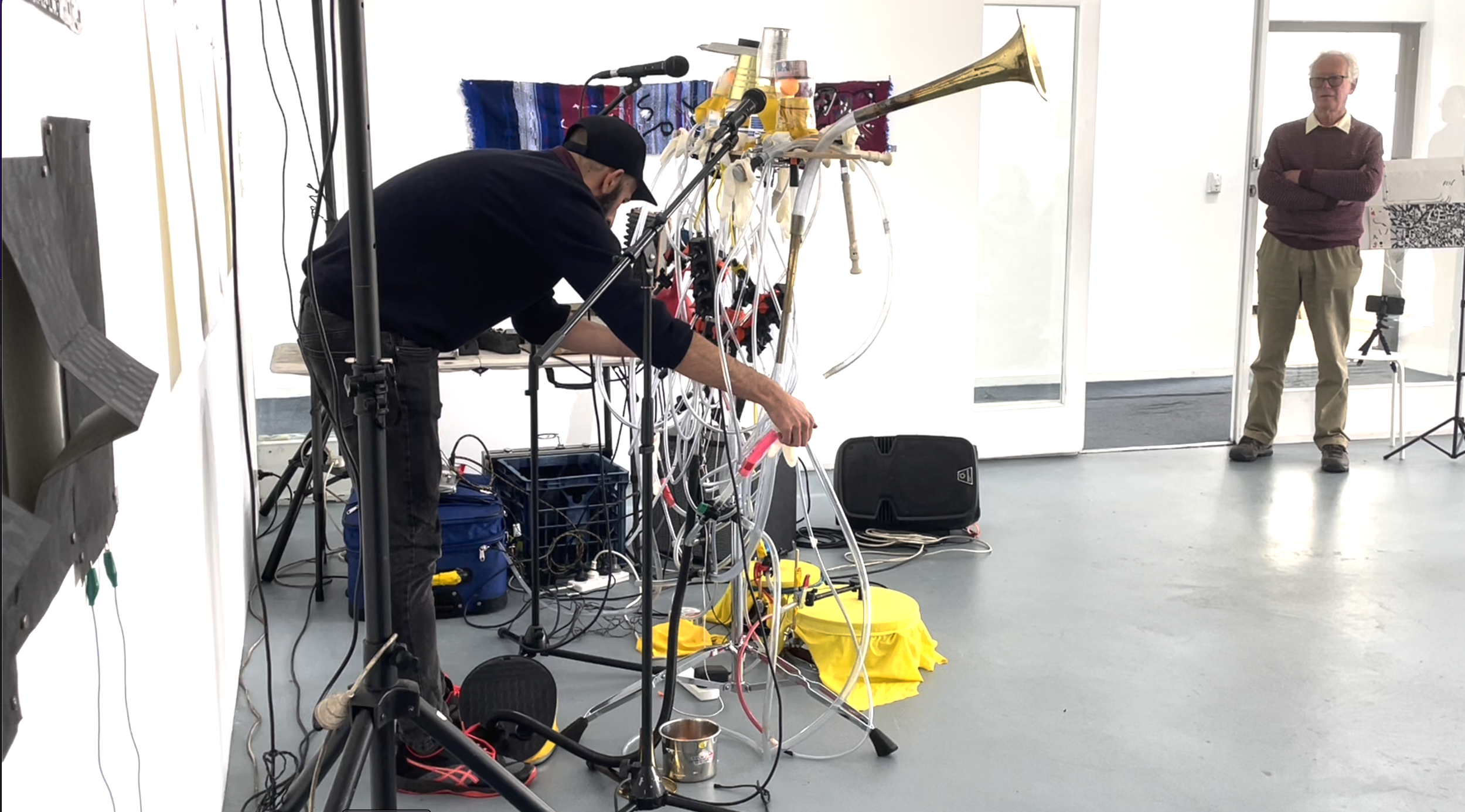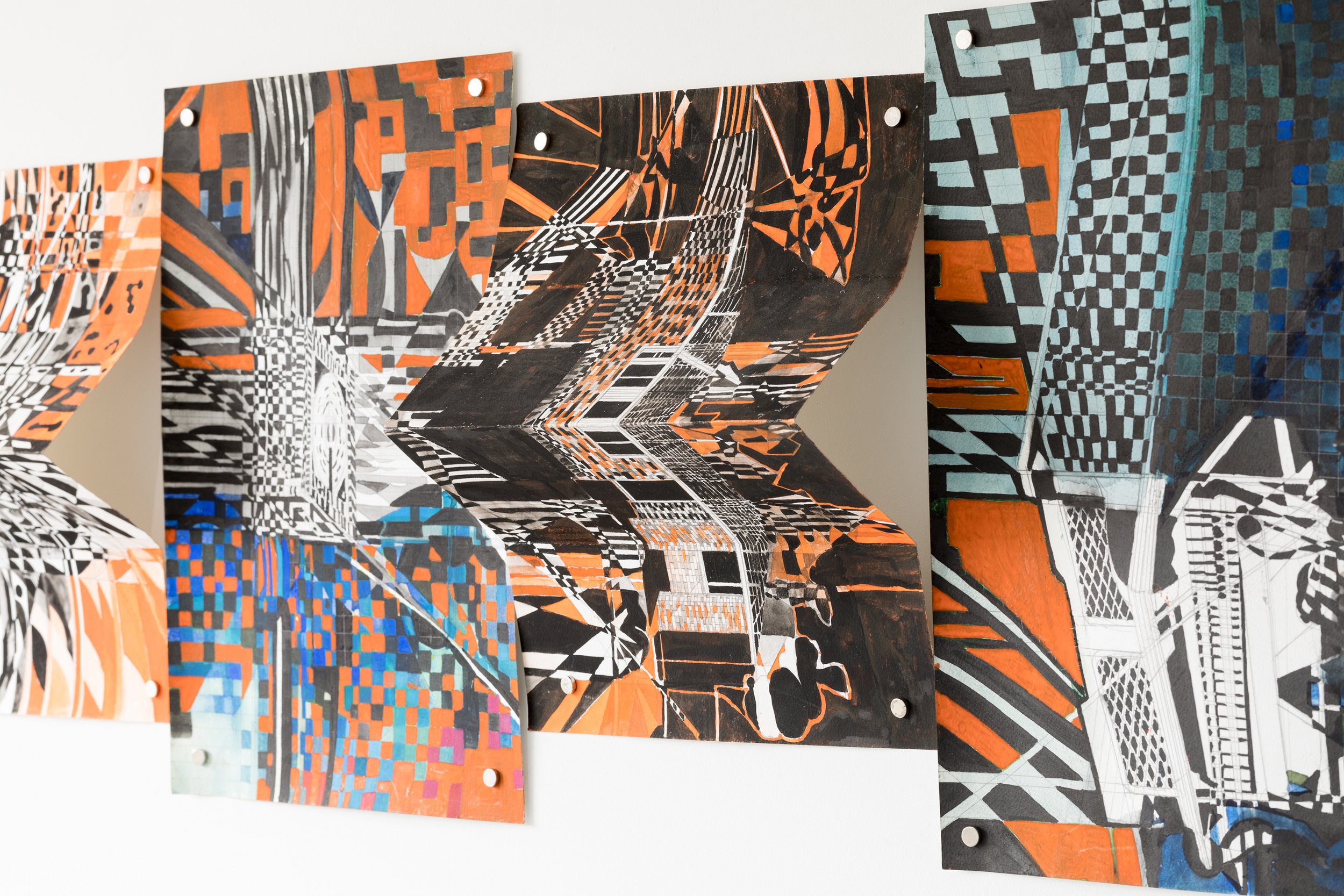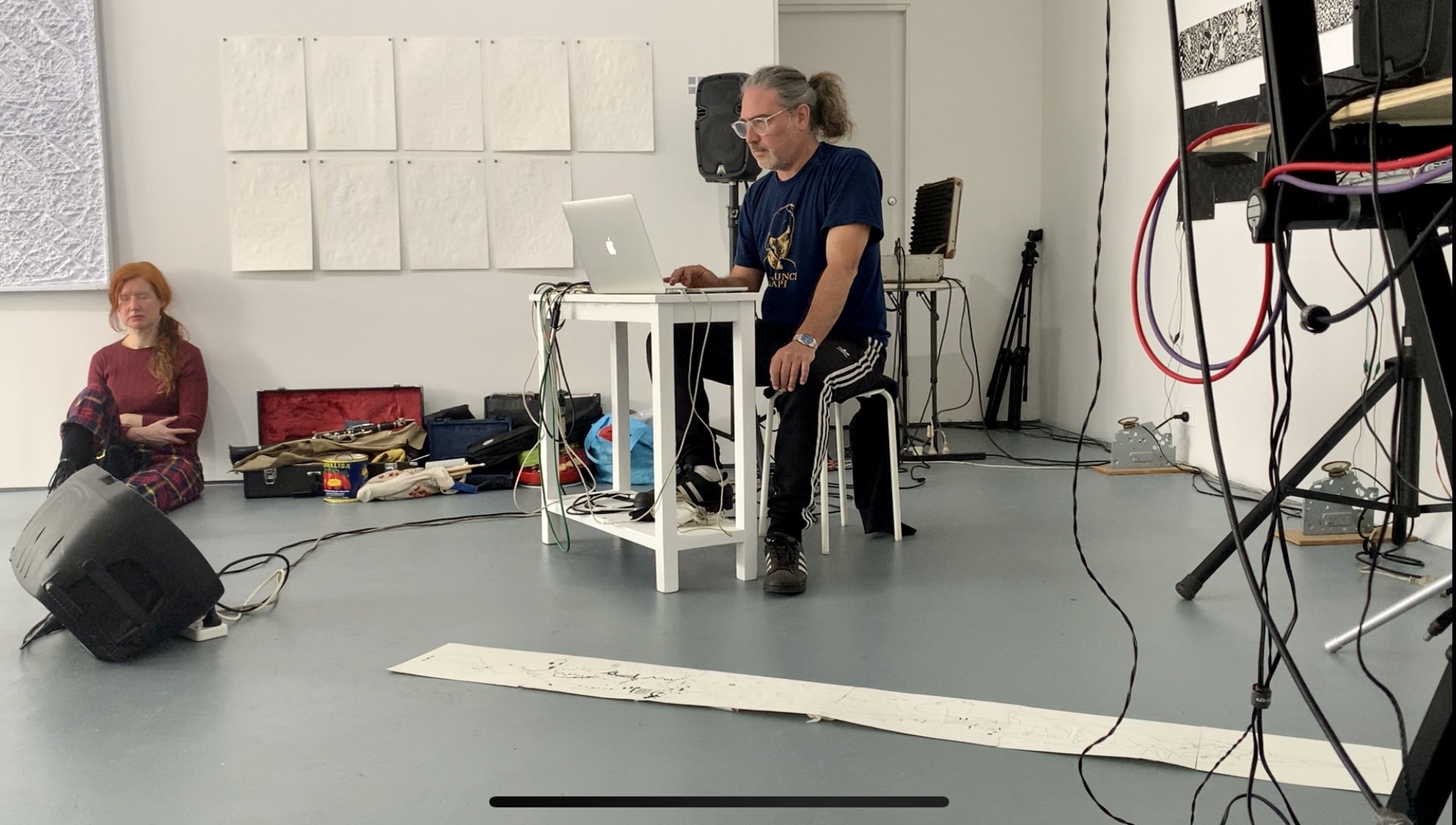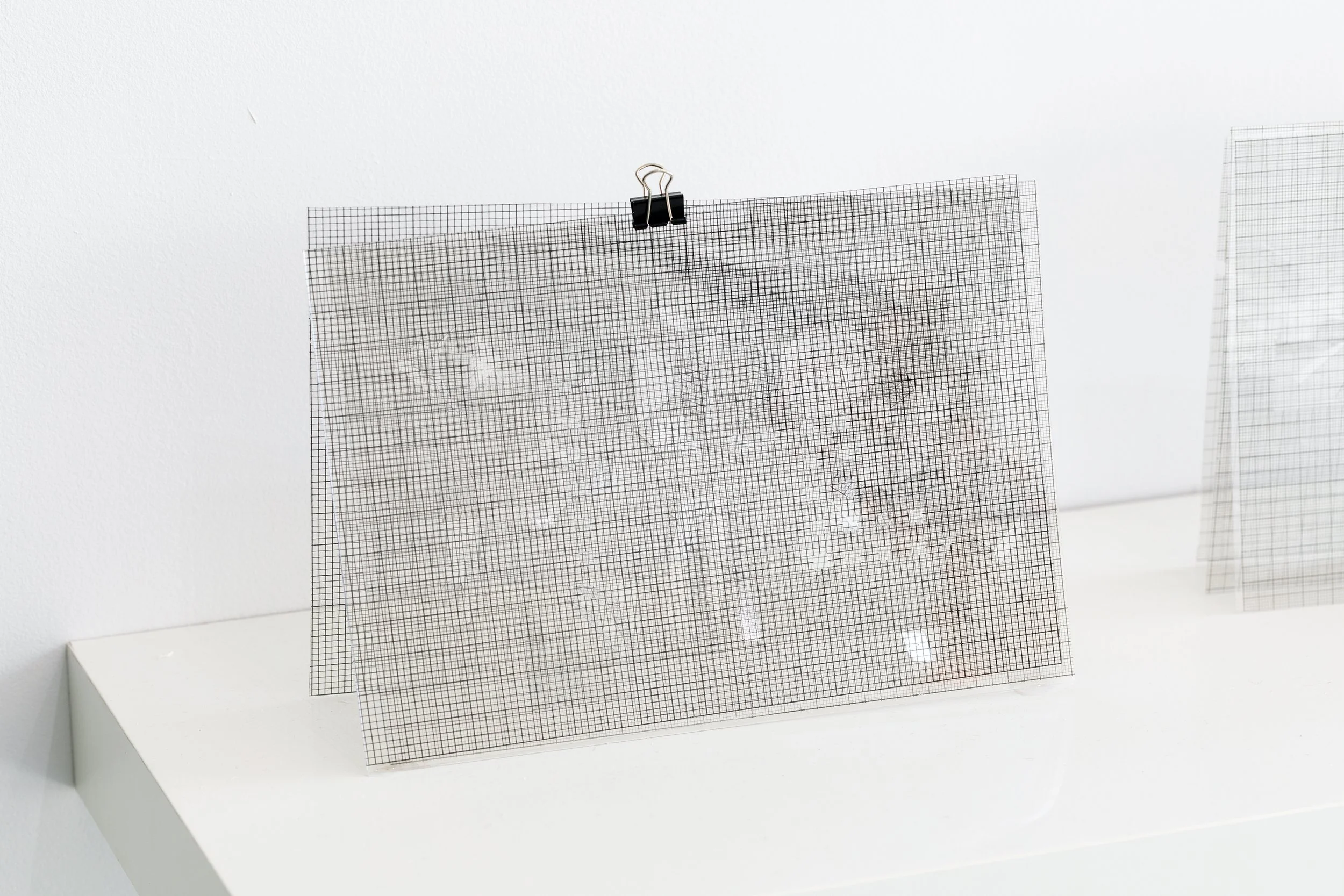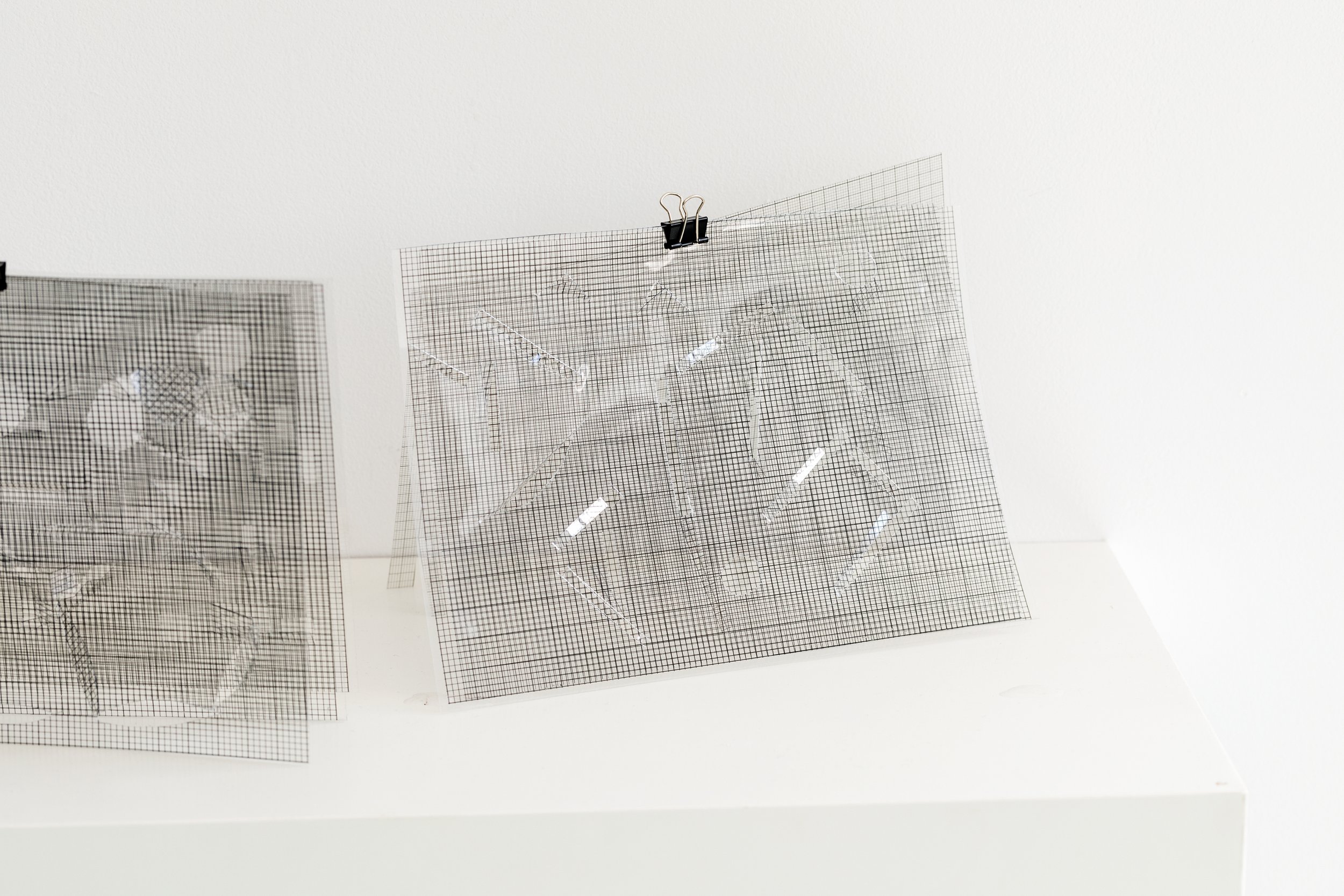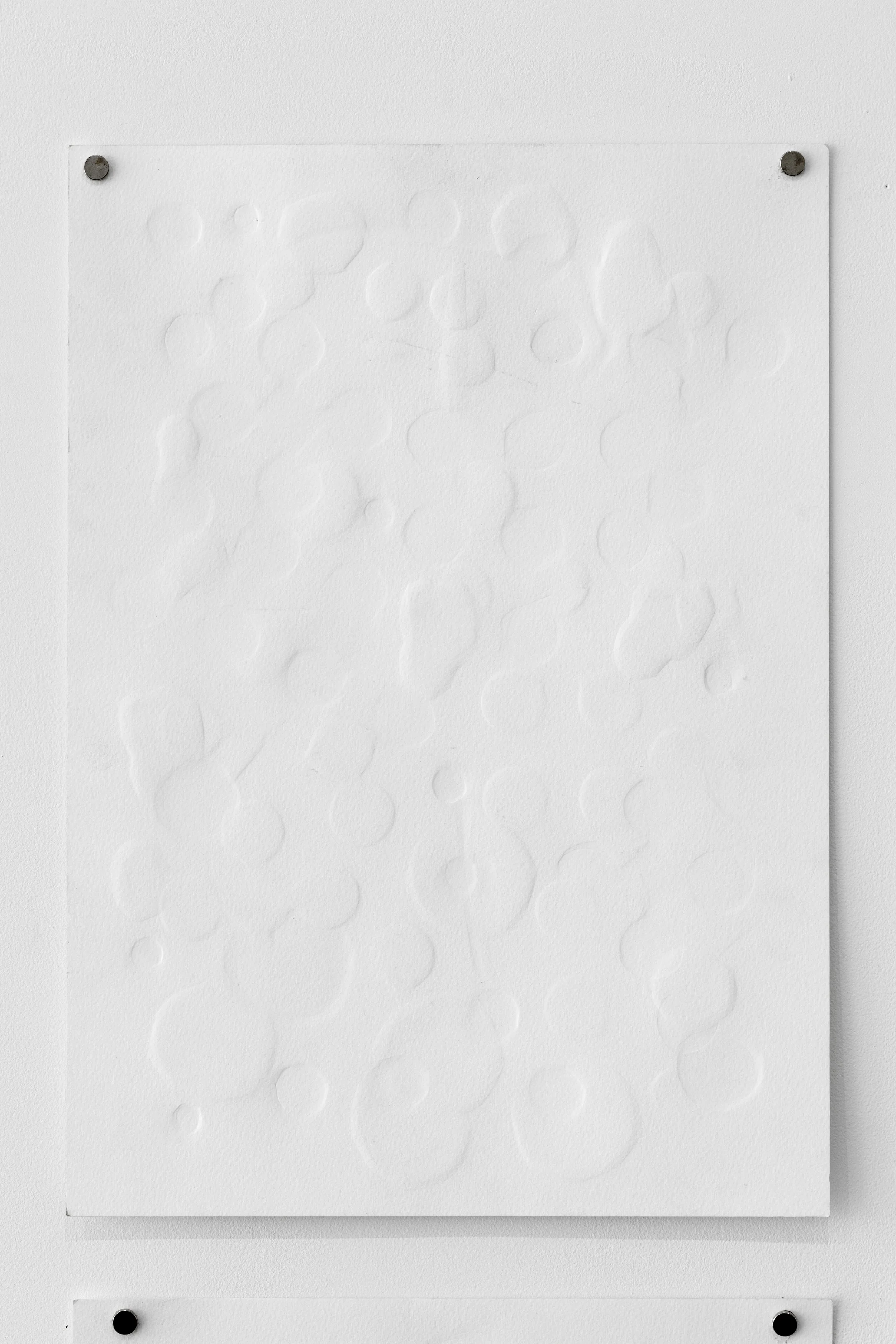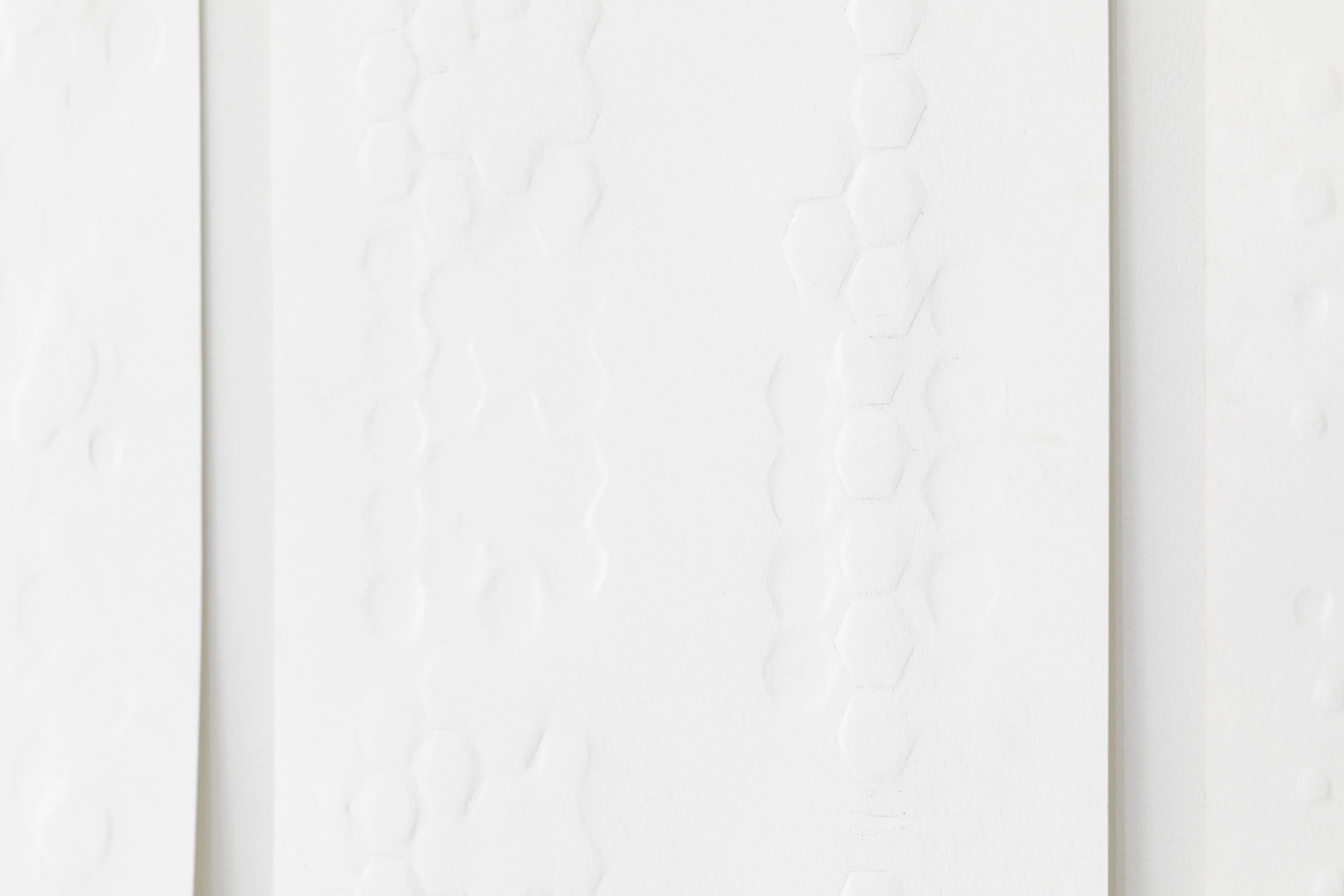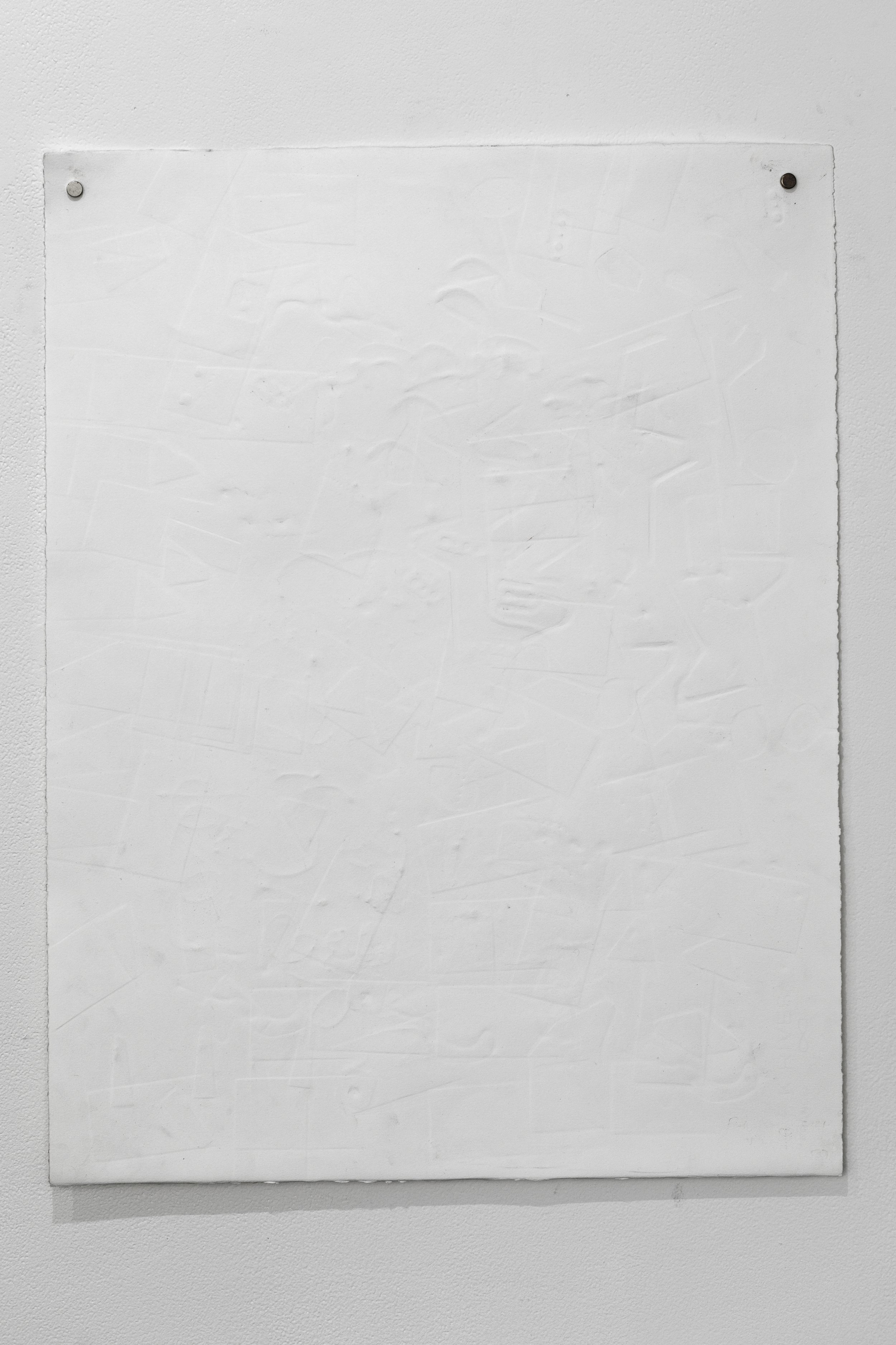hyphae - a visual score / performance project by Tina Douglas with invited musicians/sound artists Ernie Althoff, David Brown, Carolyn Connors, Rod Cooper, Tina Douglas, Dale Gorfinkel, Nat Grant, Alex Hamilton, Nik Kennedy, David Palliser, Chloe Sobek, Robbie Avenaim at Five Walls, Footscray.
Tina Douglas, Hypha_e Corinna Berndt 2023
Last year, an article suggesting that fungi might communicate with each other using words went viral. British computer scientist, Andrew Adamatzki proposed that mushrooms have their own computational language, comprising of a vocabulary of approximately 50 words, which they transmit in the form of electrical signals via their interconnected mycelium networks.1 Further research, and perhaps novel reconceptualisations of language itself, might be needed to better understand this phenomenon. Nonetheless, the article sparked much debate and highlighted the impact of the natural world on our imagination, while also drawing attention to the many concealed organic communication networks that surround us. In botany, the threads that make up these mycelium networks are referred to as hyphae. Hyphae are thread-like branching filaments resembling a web of spidery connections— perhaps not unlike the images that come up when you put the term neural network into Google.
This recent focus on organic communication networks poses many questions concerning understandings of language, the way information is transmitted, how meaning is generated, and how one form of communication might be transcribed into another. In music, for example, the transcription of sound plays an essential role in sharing and communicating sonic information. Significantly, conventional musical notation systems, such as sheet music, do not necessarily convey the full expression of the many sensorial, emotional, and poetic aspects that sound might contain and convey. Consequentially, other possible means, such as expanded conceptions of the score, have been creatively explored by musicians and artists alike across a range of historical interdisciplinary configurations.
Somewhat like the aforementioned hyphae or filaments of the mycelium, experimental musical collaborations between artists and musicians operate as interconnected communal exchanges with a capacity to generate new interactions between varied elements. In this case, however, it is visual and sonic information that travels through a multitudinous networks. When translating visual scores into sound, the network that this information travels through, might comprise pedals, circuit boards, speakers, multiple computational systems, as well as human and non-human participants.
Naarm / Melbourne visual artist and sound-maker Tina Douglas’ project Hypha-e exemplifies a complex and networked exploration of experimental score and sound making. This project plays directly with the transmission of information—both aural and visual—while also mobilising an interdisciplinary pictorial logic. Working with local experimental musicians that she has both known and collaborated with for many years, Douglas created several visual scores that to her reflect aspects of their respective approaches to sound making. Initially developed from a close collaboration with Berlin composer Magda Mayas, Douglas developed an expanded version of their collaboration, inviting twelve local sound artists to participate. Douglas then created twelve individual scores, one for each artist, prompting them to translate the visual information of her scores into experimental sound performances.
Translation can also suggest transformations of matter through processes. For French philosopher Michel Serres, translation is analogous with processes of making connections.2 Likewise, “[t]he act of making’ something new’ ... occurs through the forging of novel associations, almost [like] a kind of bricolage”.3 Also applicable to Douglas’ project is Brazilian-Czech Philosopher Vilem Flusser’s consideration of translation as
A huge territory crisscrossed with multiple journeys back and forth and loose shifting, [an] unstable string of interconnected points that bear the trace of previous passages and crossings.4
Echoing this sense of unstable labyrinthian complexity, Douglas’ visual scores also suggest a constellation of loose connections between diverse creative practices and disciplines. When translating visual documents into sound passages, traces of her visual patterns, rhythmical lines and surfaces are effectively recursively re-discoverable as sonic textures.
Douglas’ scores also warrant consideration of their rich material qualities. Many of her scores feature tactile, as well as sculptural elements, all variously testing the limitations of materials while exploring possible notation formats and relationships between sound and pictorial compositions. Many of the scores imply traces of the hand, be it through working with hand-woven textiles, or textural and raised elements in paper produced by rubbing a fingernail over an object, or other forms of gestural mark-making. In sum, Douglas’ scores seem to question the boundaries of the material, where it might resist, and where it might become malleable or porous.
In turn, aural responses to Douglas visual scores also test the materiality of sound, the limits of the instrument, and illuminate the layered systems and circuits through which sound travels. Hypha-e constitutes the presentation of several sound machines, multiple live performances, together with a digital archive of numerous sound recordings. In this project, Douglas weaves together an emerging vocabulary of visual and sonic exchanges in collaboration with a group of invited musicians. Notably, Douglas constructs her own language as a means through which to discover and articulate the manifold potential inherent in cross-disciplinary creation. The sound corresponding to Douglas’ scores is varied in its layering, yet at the same time, clearly specific to the range of mark-making within the scores. Intriguingly, we appear to be witnessing a flow of communication between the logic of Douglas’ visual scores and the invited experimental musicians’ own relationships to sound-creation.
Douglas’ mutually responsive visual and aural articulations suggest both a crossing over between disciplines and the communicative expression of particular logics embodied within each score. Yet perhaps most importantly, the scores generate a network of reciprocal exchanges and imply a curious interdisciplinary artistic ecosystem. These exchanges speak to the value to artistic communities and to ever-evolving historical linkages between creative practitioners. Finally, the project speaks to the mutual care, passion and creativity that travels through our human neural networks when we collaborate with others. Hypha-e thus exists primarily as a speculative performance score project for illuminating and testing creative connections and for generating new possibilities in interdisciplinary collaboration.
Corinna Berndt is a PhD Candidate at the University of Melbourne, Faculty of Fine Arts and Music
1 Ka$e Field, Do mushrooms really use language to talk to each other? A fungi expert inves9gates, accessed 10 March 2023 h4ps://theconversa$on.com/do-mushrooms-really-use-language-to-talk-to-each-other-a-fungi-expert- inves$gates-181079,
2 S.D. Brown (2002). Michel Serres: Science, Transla$on and the Logic of the Parasite. Theory, Culture & Society, 19(3), 1–27
3 Ibid.
4 Anke Finger, Rainer Guldin, and Gustavo Bernardo, 'Transla$on and Mul$lingual Wri$ng', Vilém Flusser: An Introduc9on (Minneapolis, MN, 2011; online edn, Minnesota Scholarship Online, 24 Aug. 2015)
Download exhibition catalogue Tina Douglas, hypha_e by Corinna Berndt
Play submitted recordings by hypha_e musicians/sound artists on Sound Cloud
Note: Live performance recordings are still in progress. These will be uploaded in late 2023































